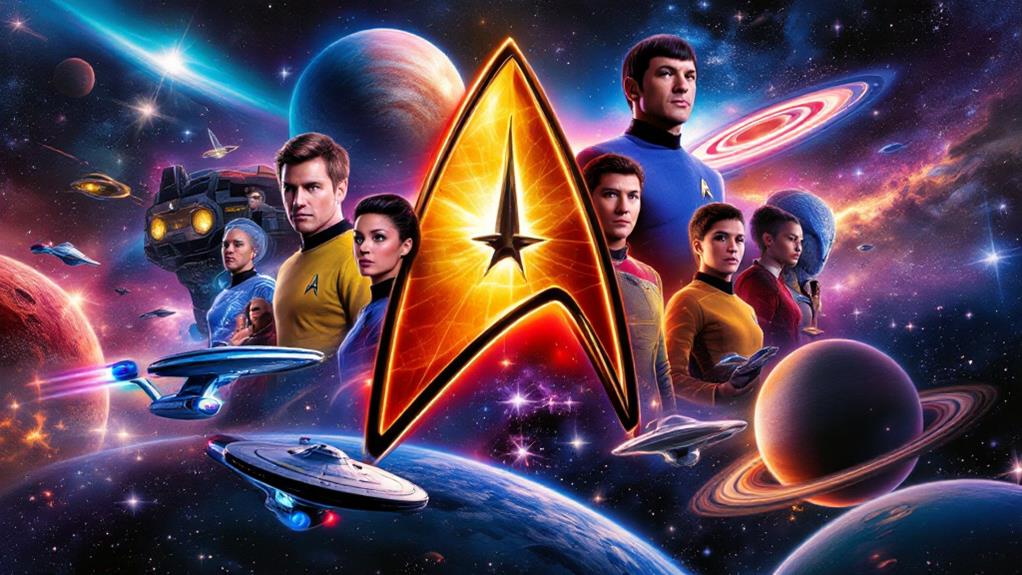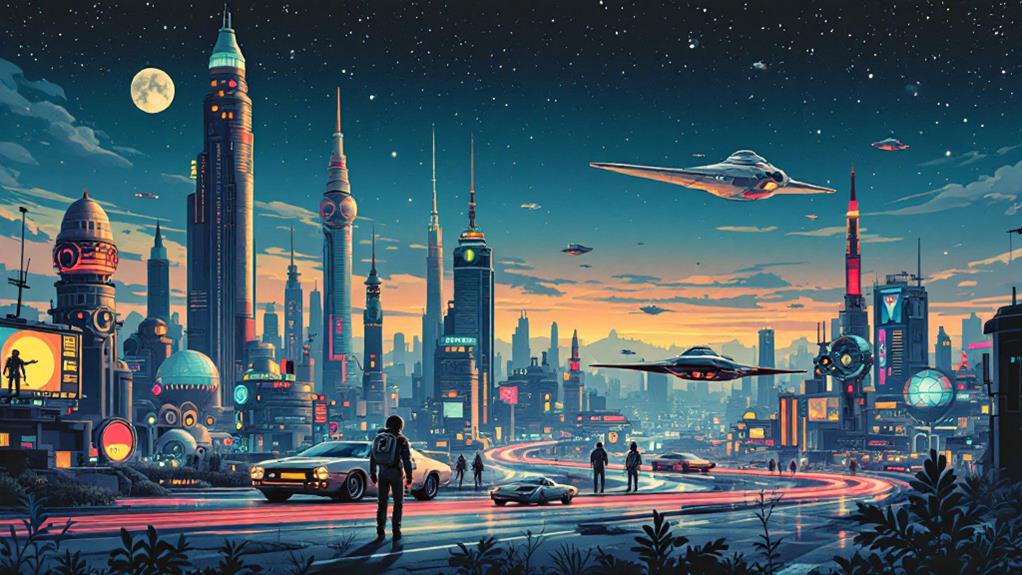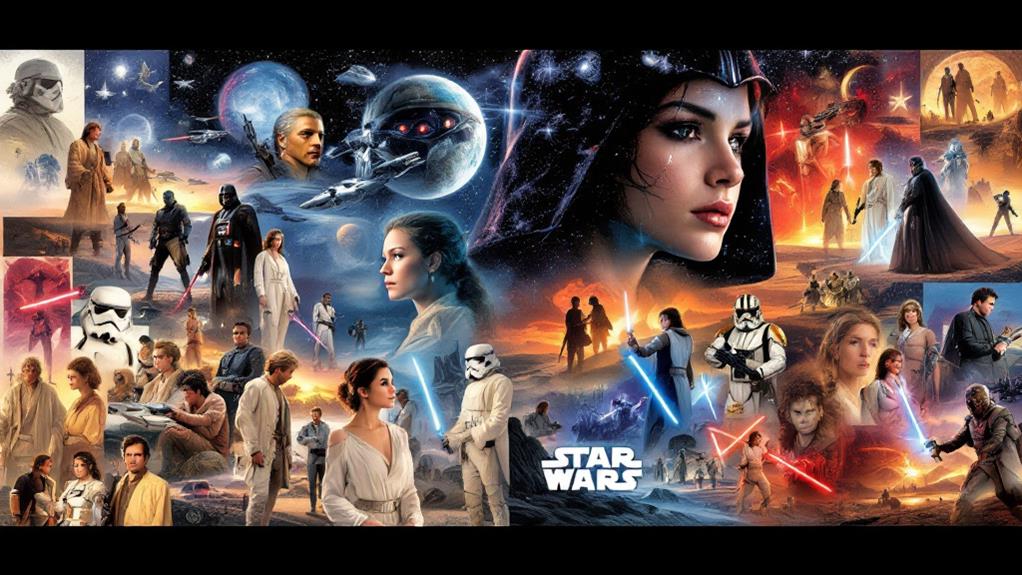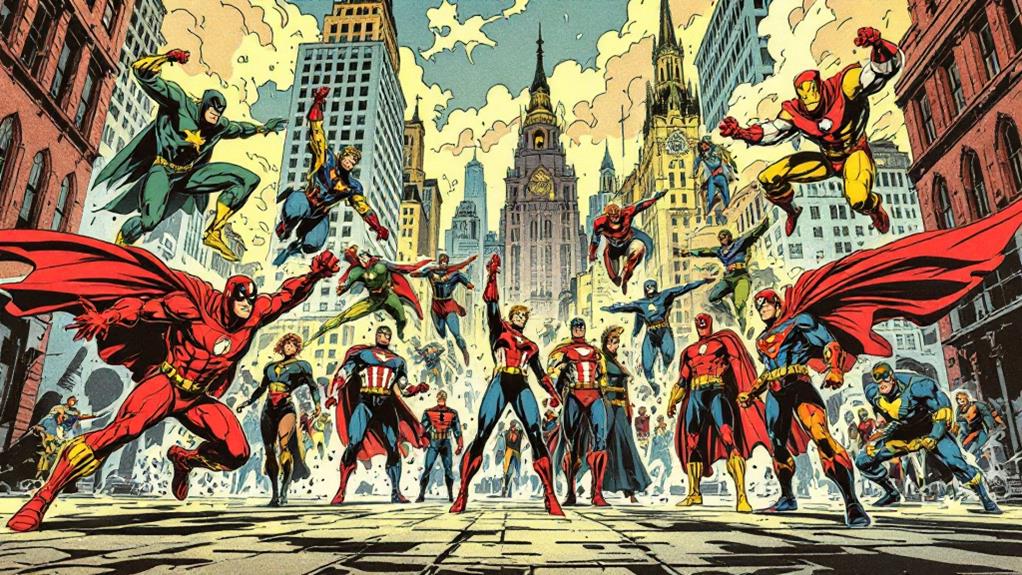The Early History of Marvel Comics: The Origins of Superhero Legends
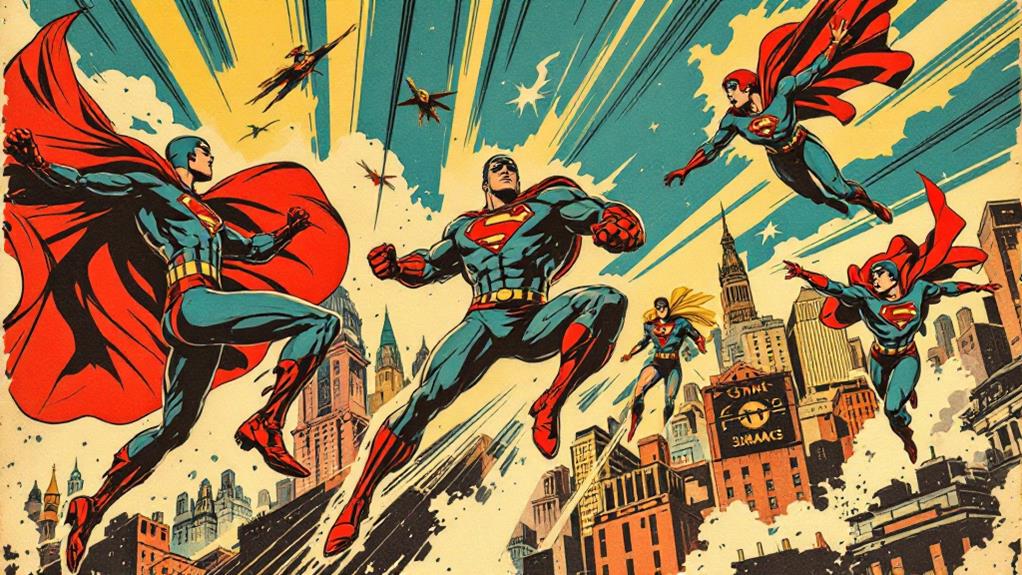
Marvel Comics' expedition began in 1939 with Timely Publications, introducing characters like the Human Torch and Sub-Mariner. Fast forward to the 1940s, and you'll find Captain America, a symbol of hope during turbulent times, wielding his iconic shield. The Golden Era of Comics saw superheroes becoming cultural icons. As you move into the 1960s, Stan Lee's groundbreaking storytelling with characters like Spider-Man and the Fantastic Four reshaped the landscape, combining relatable human struggles with extraordinary powers. These early efforts laid the foundation for Marvel's lasting impact, so there's much more to unearth as you investigate further.
Timely Publications' Beginnings
Founded in 1939, Timely Publications marked the inception of what would eventually become Marvel Comics. You're stepping into a world where the seeds of superhero legends were initially sown. Back then, Timely characters like the Human Torch and the Sub-Mariner captured readers' imaginations. These early heroes weren't just ink on paper; they were pioneers blazing a trail in the comic book industry.
As you investigate this period, you'll see how early creators like Carl Burgos and Bill Everett shaped the foundation of Marvel's iconic universe. Burgos brought the fiery Human Torch to life, while Everett introduced the aquatic Sub-Mariner. These characters weren't just products of their time; they became timeless icons, echoing through the decades as Marvel evolved.
In these formative years, Timely Publications wasn't just about superheroes. It was a creative hub, thriving with ideas and artistic innovations. You'll find that the early creators not only defined characters but also laid down storytelling techniques that would influence generations. As you examine Timely's beginnings, you witness the birth of a cultural phenomenon that still resonates today, setting the stage for Marvel's rise to comic book dominance.
Birth of Captain America
As Timely Publications thrived with its early successes, the world was introduced to a new kind of hero in 1941—Captain America. You witness Captain America's creation at a crucial moment in history, when the world was on the brink of war. This iconic character emerged as a symbol of hope and resilience, crafted by the talented minds of Joe Simon and Jack Kirby. They envisioned a hero who'd stand up against tyranny and embody the American spirit in the face of growing global threats.
Captain America's symbolism resonated deeply with audiences. You see him clad in a costume mirroring the American flag, wielding an indestructible shield as both a weapon and a defensive tool. His alter ego, Steve Rogers, starts as a scrawny young man who, after being improved by the Super-Soldier Serum, transforms into the epitome of human potential. This transformation represents the idea that anyone, regardless of their origins, could rise to become a force for good.
Through Captain America, readers found a guiding light of courage and justice. His stories allowed them to imagine a world where valor and integrity could triumph over oppression.
The Golden Age Explosion
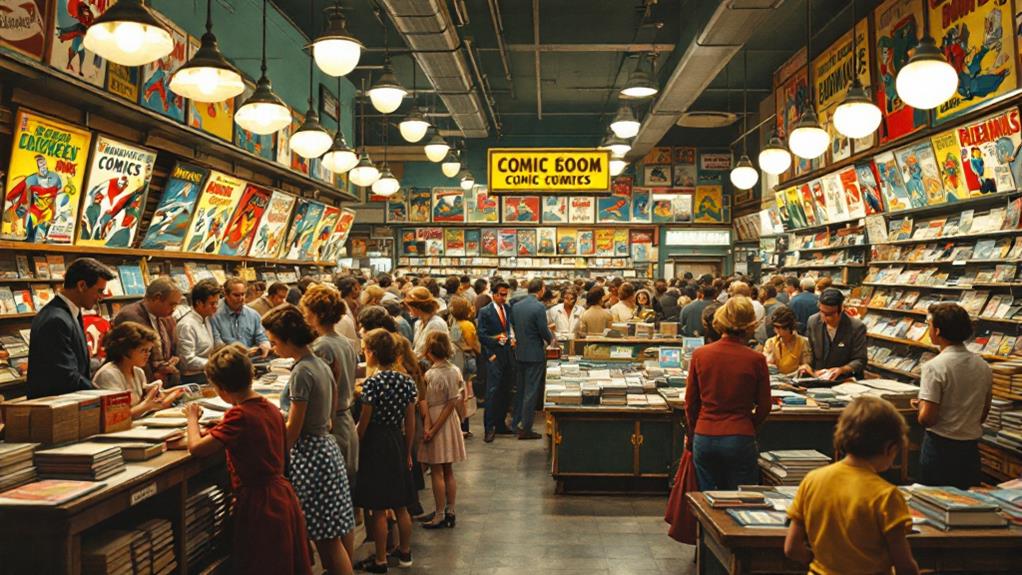
The 1940s was a lively timeframe for comic books, known as the Golden Period, when superheroes leapt from the pages and into the hearts of readers everywhere. During this time, you saw the rise of iconic heroic archetypes that embodied courage and justice. Superheroes weren't just stories; they served as wartime propaganda, rallying spirits and promoting patriotism. These characters became symbols of hope, inspiring both soldiers on the frontlines and civilians at home.
You might be surprised at how quickly the artistic evolution transformed comics during this time. With increasing character diversity, comic creators introduced a range of personalities, from bold warriors to clever detectives. The competition among publishers was fierce, pushing each one to innovate and capture your attention through thrilling tales and vivid illustrations.
To keep you engaged, publishers expanded beyond the pages:
- Fan Engagement: Comic book clubs and letters pages allowed you to connect with creators and fellow fans.
- Genre Innovation: New genres like horror, romance, and science fiction began to emerge, offering something for everyone.
- Merchandising Expansion: Toys, radio shows, and other merchandise made superheroes a part of everyday life.
This explosion laid the groundwork for the enduring legacy of comics.
Stan Lee's Early Contributions
Few figures in the comic book industry have left as indelible a mark as Stan Lee. When you investigate his early contributions, you'll find that his unique approach to storytelling and collaboration set the foundation for Marvel's success. Stan Lee's storytelling was groundbreaking, combining relatable characters with extraordinary powers. He didn't just craft heroes; he gave them depth, personal struggles, and flaws, making them resonate on a human level.
In the early 1940s, Stan Lee's collaborations with artists like Jack Kirby and Steve Ditko were significant. Together, they transformed the superhero genre by creating dynamic characters and intricate plotlines. These collaborations were more than just partnerships; they were creative symbioses that pushed the boundaries of what comic books could be. Lee's knack for dialogue and character development complemented his collaborators' artistic talents, producing stories that captivated readers.
As you examine his early years, it's clear that Stan Lee's vision and storytelling prowess played an essential role in transforming Marvel from a fledgling publisher into a powerhouse. His early contributions laid the groundwork for the rich tapestry of characters and stories that would follow, shaping the Marvel Universe you know today.
Emergence of the Fantastic Four
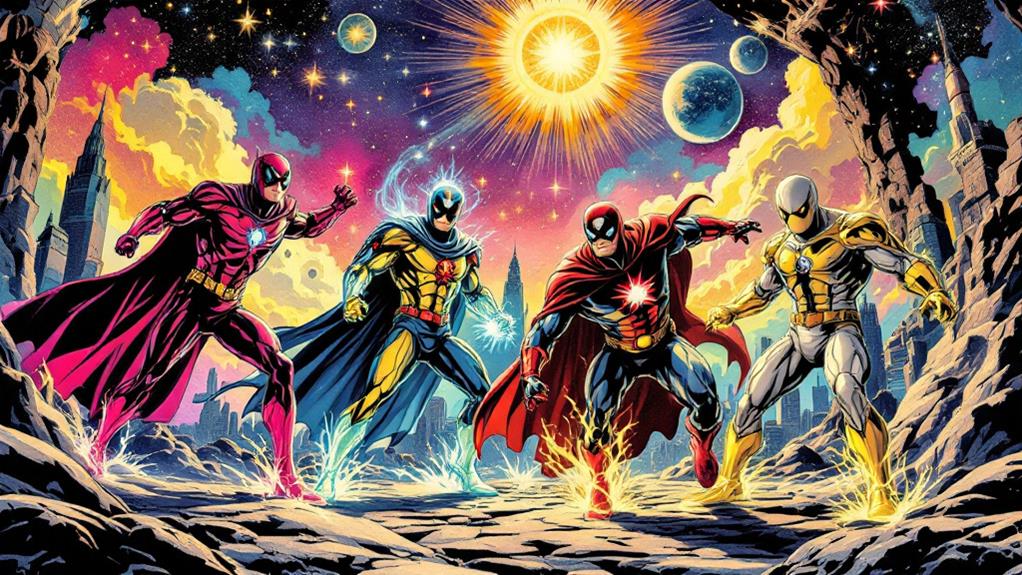
Stan Lee's groundbreaking storytelling naturally led to the creation of Marvel's premier family of superheroes, the Fantastic Four. You plunge into a world where superhero teamwork becomes the heart of the story. Unlike any heroes before them, the Fantastic Four accepted their flaws and strengths, forming a team dynamic that was both relatable and inspiring. Their cosmic adventures took you to unimaginable places, battling against villain dynamics that challenged and excited readers.
What makes the Fantastic Four truly stand out is their diverse characters. You meet Reed Richards, the brilliant but sometimes absent-minded leader, also known as Mr. Fantastic. Sue Storm, the Invisible Woman, offers both compassion and strength. Her brother, Johnny Storm, the Human Torch, brings youthful energy and enthusiasm to the mix. Finally, Ben Grimm, the Thing, embodies raw power and a heart of gold. Together, they redefine what it means to be a family.
Here's what you can expect from their stories:
- Epic Cosmic Adventures: Travel through space and time.
- Complex Villain Dynamics: Face foes like Doctor Doom.
- Groundbreaking Storytelling: Engage with characters that grow and evolve.
With the Fantastic Four, you set off on an unforgettable expedition.
Spider-Man's Iconic Debut
When Spider-Man swung onto the scene, he redefined what it meant to be a superhero. You couldn't help but be drawn to his unique Spider-Man's powers, which included wall-crawling, superhuman strength, and the ability to sense danger with his "spidey sense." Unlike other heroes, Spider-Man, or Peter Parker, was a relatable teenager struggling with everyday issues, making him an instant favorite. His debut in "Amazing Fantasy #15" in 1962 introduced you to a new kind of hero—one with flaws and insecurities.
The Spider-Man's costume, with its bold red and blue colors and iconic web pattern, became an enduring symbol of heroism. You'd recognize it anywhere, with its striking design and expressive eye lenses. This costume set Spider-Man apart, allowing his movements to be fluid and dynamic, just like his acrobatic abilities.
Spider-Man's villains further enriched his stories, offering you complex adversaries like the Green Goblin, Doctor Octopus, and the Vulture. These foes challenged Spider-Man's moral compass and tested his resolve. Spider-Man's legacy remains strong because of this combination of compelling powers, iconic costume, and memorable villains, ensuring his place as a cornerstone of superhero lore.
Cultural Impact and Influence
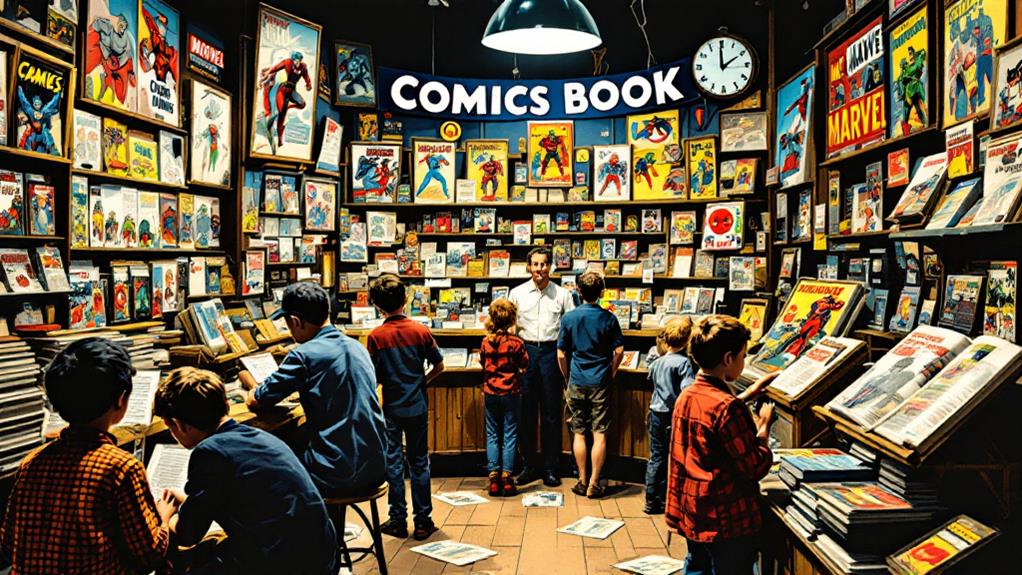
Spider-Man's popularity didn't just stop at the pages of comics; it expanded beyond into the very fabric of popular culture. As you explore his impact, you'll notice how this iconic character, along with other Marvel superheroes, created lasting cultural resonance. Marvel's stories didn't merely entertain; they mirrored societal reflections of their time, tackling issues like diversity representation and moral complexity. This approach resonated with audiences, leading to a narrative evolution that kept readers engaged.
Marvel's artistic creativity set new standards for storytelling and visual design. The characters' relatable struggles and triumphs fueled fandom growth, creating a global community of enthusiasts. This strong fanbase helped drive the cross media adaptation of Marvel's tales into television, film, and merchandise, ensuring their stories reached even wider audiences.
Here are some key influences Marvel has imparted:
- Narrative Impact: Marvel's stories reflect societal issues, encouraging conversations about morality and diversity.
- Artistic Influence: Their groundbreaking art styles inspired countless artists and storytellers.
- Fandom Expansion: Marvel's engaging narratives helped build a dedicated, worldwide fanbase.
Marvel's heroes not only entertained but also inspired, reflecting the complexities of the real world through their adventures.
Legacy of Early Marvel Comics
Exploring the legacy of early Marvel Comics reveals how these initial stories laid the groundwork for a cultural phenomenon. As you immerse yourself in these tales, you'll notice that character development was at the forefront, setting Marvel apart from other comic publishers. Characters like Spider-Man and the Fantastic Four weren't just heroes; they were relatable individuals with real-world problems. This approach allowed readers to connect emotionally, creating a fan base that would grow for decades.
Artistic innovation was another key factor in Marvel's enduring legacy. Visionaries like Jack Kirby and Steve Ditko pushed the boundaries of comic art, introducing dynamic panel layouts and lively, expressive visuals that captured the imagination. Their work set a new standard for visual storytelling, influencing countless artists and shaping the medium itself.
